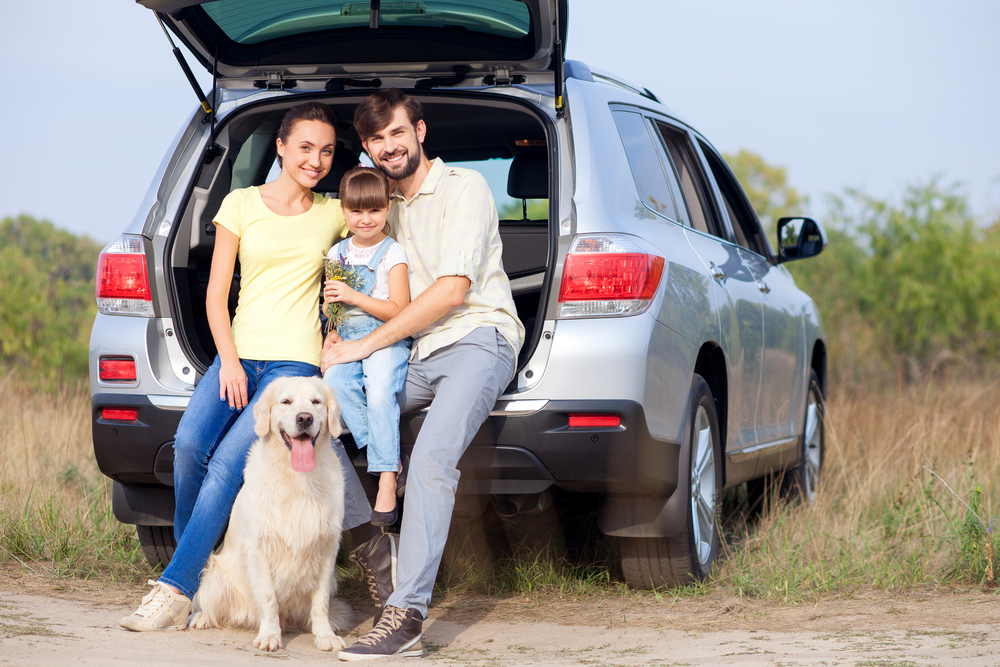Every dog in my life has been raring to go anywhere by car. When I attached the seat belt adapter to their harnesses to keep them safely tethered, it signaled that a fun ride was ahead.
All have sported wide grins, no matter if it was a quick jaunt to fill up the gas tank or a day-long road trip.
Then I adopted Emma. Or rather, she showed up in our neighborhood as a stray at the start of the pandemic, moving slowly and looking ill, minus any collar or microchip identification. My veterinarian, Deborah Charles, DVM, at Casa Linda Animal Clinic, in Dallas, Texas, quickly discovered that Emma was full of heartworms.
After Emma recovered and we prepared to go on a doggy vacation, I discovered she suffers from motion sickness. Within minutes of pulling out of the driveway, Emma, a toy Poodle-Chihuahua mix of eight pounds, would pant, whine, pace, and yes, vomit.
“Some dogs are truly motion sick and some exhibit signs of motion sickness because they are stressed,” says Kathryn Primm, DVM, owner and chief veterinarian at Applebrook Animal Hospital, a Fear Free Certified hospital in Ooltewah, Tennessee. “Is your dog stressed because of motion sickness or has motion sickness because they are stressed? My recommendation is to treat motion sickness first and then address the stress causes.”
Dr. Primm says to look for clues – behavioral and medical – that may contribute to your dog’s motion sickness. She shares the cases of motion sickness in a pair of personal dogs: Puggy, a Pug mix, and her current dog, Skye, a standard Poodle.
“Pug faces are very expressive,” says Dr. Primm. “Years ago, Puggy would start to drool when we approached the car and once inside, would have such a miserable look on his face and promptly vomit. Skye, on the other hand, loves riding in my Jeep, but I discovered she is fearful of the slick seats of my husband’s vehicle and will become fearful and resist getting in his car.”
Motion sickness can strike any dog of any breed and age. Dealing with a queasy stomach can cause some canines to drool, vomit, whine, pant, pace, and lip lick.
In young pups, the culprit may be youth. The inner ear, which helps maintain equilibrium and balance, is still developing.
And traumatic experiences, such as being tossed around in a vehicle when the driver stops suddenly, can stick with pups who weren’t properly secured. The experience is not forgotten and may cause the pup to associate the car with that scary event.
Dr. Primm identifies several ways to deal effectively with motion sickness in your dog:
- Request Cerenia. This anti-nausea drug is the one and only veterinary-prescribed medicine licensed to treat and prevent vomiting triggered by motion sickness in dogs. Veterinarians recommend you give Cerenia about two hours before you plan to travel with your dog for best results.
“Cerenia has been a real game changer for dogs with vomiting associated with motion sickness,” says Dr. Primm. “It is safe and long lasting.”
- Consider some OTC help. Some dogs benefit by over-the-counter products, such as human antihistamines like Benadryl. Follow the recommended dose from your veterinarian and read the label carefully. Avoid combination products, such as an antihistamine that contains acetaminophen (pain reducer) or products labeled for children, which often contain the artificial sweetener xylitol. Both ingredients are dangerous if ingested by dogs.
- Give ginger a go. This herb is touted for preventing nausea and vomiting in people, and you can ask your veterinarian about giving ginger root or ginger root powder to ease the queasiness in your traveling dog.
- Elevate your dog’s view. What turned out to be a successful strategy for little Emma was to place her in a doggy booster seat that was tethered and raised up so she could safely look out the car windows. For medium and larger dogs traveling in carriers, make sure the carrier is level, secured, and not wobbling with each turn you take.
- Clear the air. Dogs possess powerful senses of smell. The smell of your cheeseburger or other fast food can make them feel nauseated. Same for cigarette smoke. Be conscious of your dog’s nose when making food-eating choices on a trip. Dr. Primm also recommends spraying Adaptil, a product that mimics canine calming pheromones, inside your vehicle before each trip.
“You can also try spraying calming scents in the car, such as lavender,” she adds.
- Tune into dog-welcoming music. Studies have shown that classical music has calming effects on dogs. Pay attention to how your dog reacts to your music choices on a trip.
- Adopt a smooth driving style. Abrupt stops and jackrabbit accelerations as well as taking sharp curves at high speeds can make some dogs in the backseat experience motion sickness.
Bottom line: Take the time to notice your dog’s specific reactions to car rides and work with your veterinarian on customizing a game plan to curb motion sickness on future trips.
This article was reviewed/edited by board-certified veterinary behaviorist Dr. Kenneth Martin and/or veterinary technician specialist in behavior Debbie Martin, LVT.








